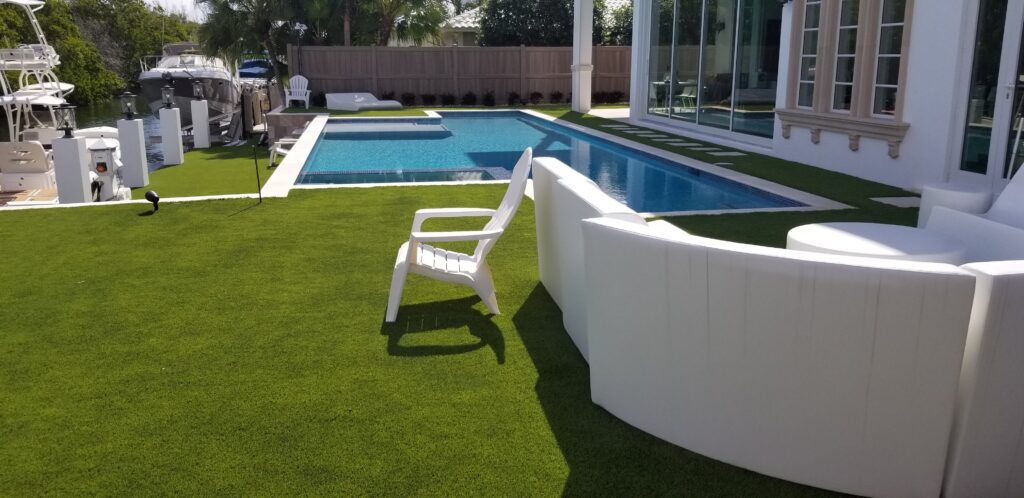Artificial grass has become an alternative to natural lawns due to its convenience and low maintenance. While it offers several advantages, it’s essential to consider the drawbacks before deciding. In this blog post, we’ll explore the pros and cons of installing artificial grass to help you make an informed choice for your landscaping needs.
Pros of Artificial Grass
One of the most significant benefits of artificial grass is its low maintenance requirements. Unlike natural lawns, artificial grass does not need regular mowing, watering, or fertilizing. This saves time and reduces water consumption, making it an eco-friendly option in areas prone to drought. Additionally, artificial grass remains green and vibrant year-round, providing a consistently attractive appearance without the hassle of seasonal care.
Another advantage is its durability. Synthetic turf is designed to withstand heavy foot traffic, making it ideal for families with children or pets. It is resistant to wear and tear, so it can handle sports and outdoor play without becoming patchy or muddy. This resilience ensures a longer lifespan than natural grass, which can suffer from overuse and adverse weather conditions.
Cons of Artificial Grass
Despite its many benefits, artificial grass has some drawbacks. One of the main concerns is the initial installation cost. High-quality artificial turf can be expensive to purchase and install, which may deter some homeowners. Additionally, while it requires less maintenance than natural grass, it is not entirely maintenance-free. Regular cleaning is necessary to remove debris and prevent odors, particularly if pets use the area.
Another significant disadvantage is its impact on the environment. While artificial grass saves water, it is made from synthetic materials that are not biodegradable. This means that once it reaches the end of its lifespan, it contributes to landfill waste.
Weighing the Options
When considering artificial grass, it’s essential to weigh the pros and cons based on your specific needs and priorities. Artificial grass may be an excellent choice if you value a low-maintenance, consistently green lawn that can withstand heavy use. However, if environmental concerns and initial costs are significant, natural grass or alternative ground covers might be more suitable.
Conclusion
In conclusion, artificial grass installation offers several advantages, including low maintenance, durability, and year-round aesthetics. However, it also has some downsides, such as high installation costs and environmental impact. By carefully considering these factors, you can make an informed decision that best suits your lifestyle and values. Whether you opt for artificial grass or another landscaping solution, the key is to choose what works best for your home’s unique needs.
TK Turf
2913 W Cypress St Suite 2, Tampa, FL 33609


Recent Comments